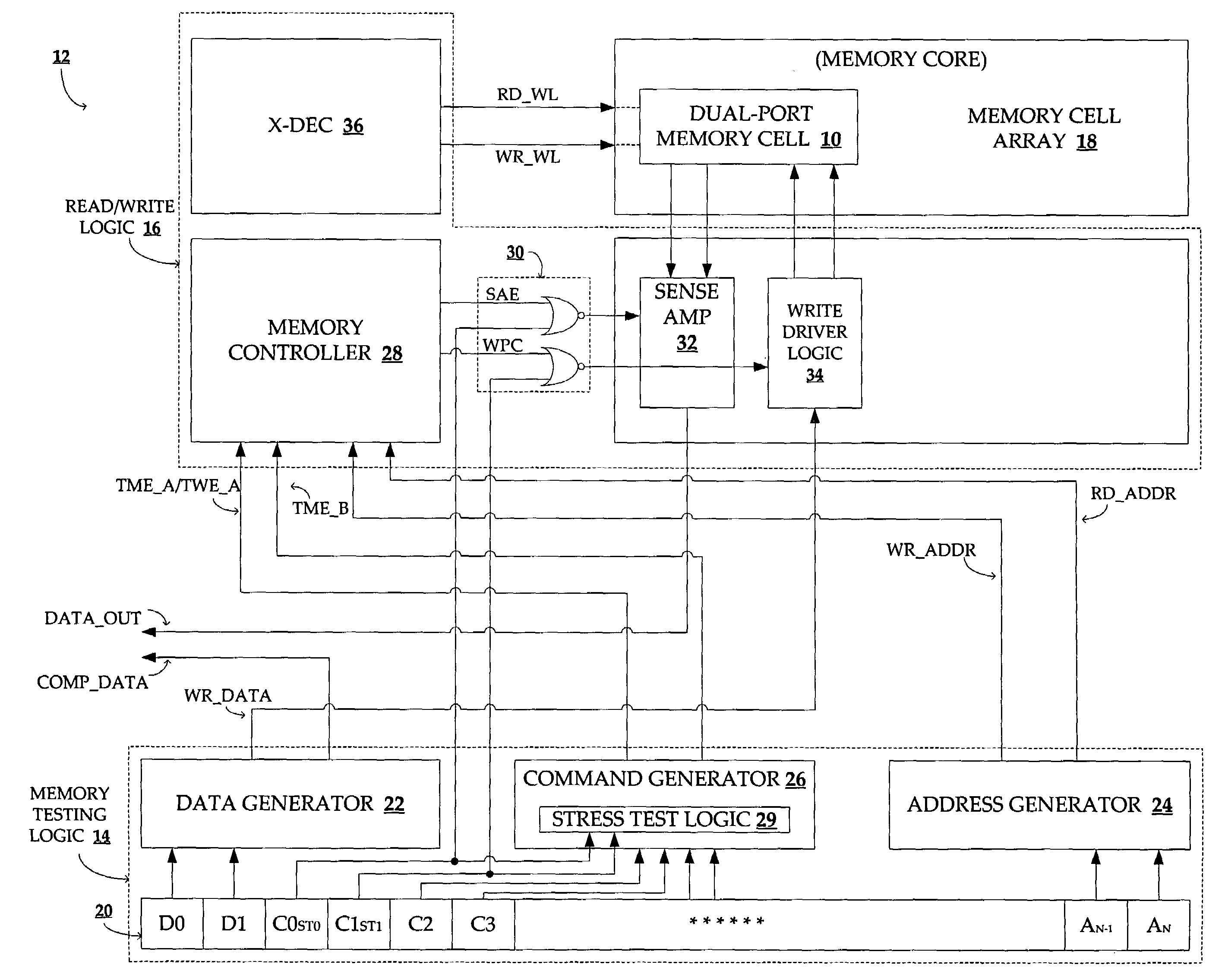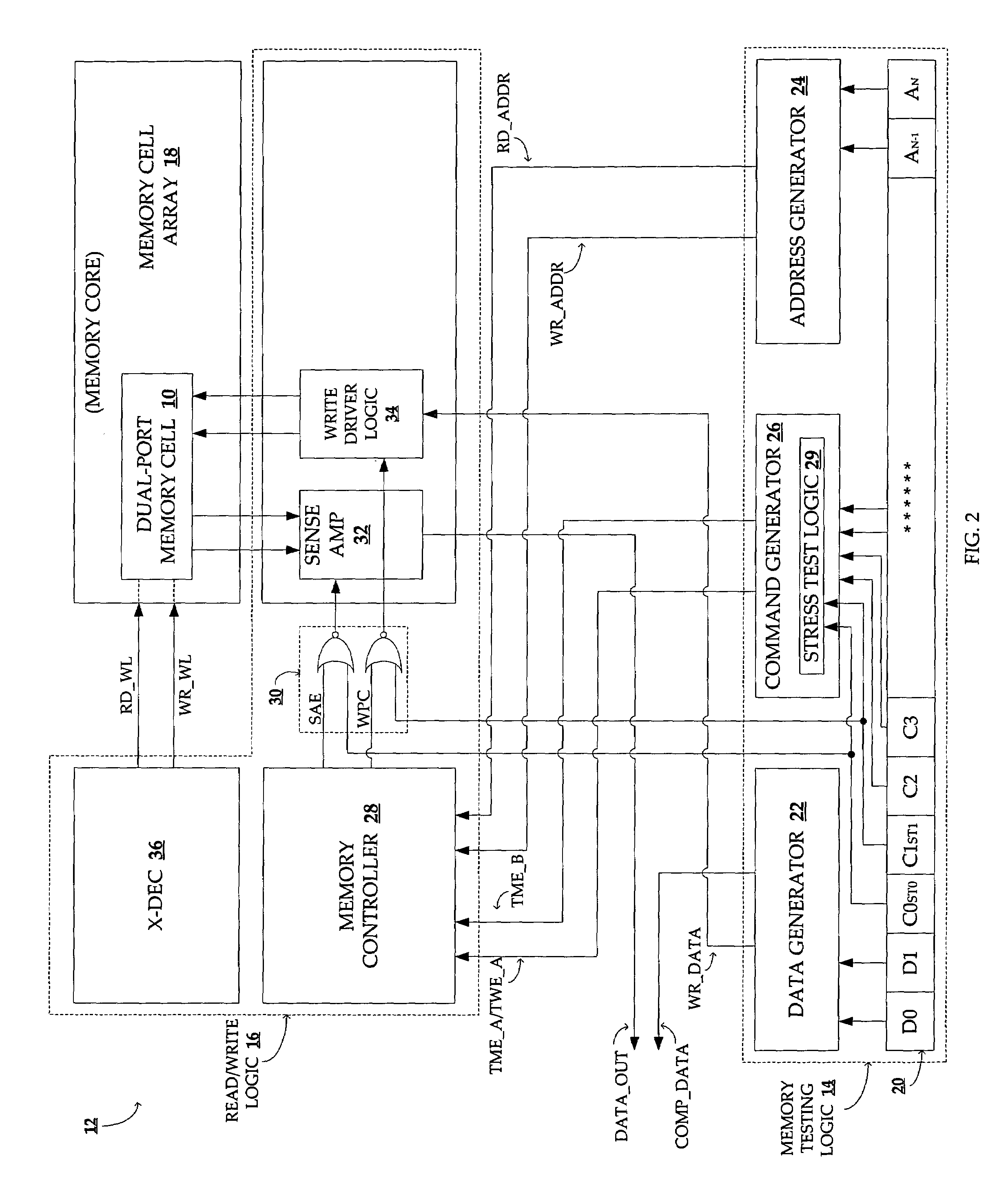Method and system for testing a dual-port memory at speed in a stressed environment
a dual-port memory and stress environment technology, applied in the direction of information storage, static storage, digital storage, etc., can solve the problems of increasing the complexity involved in the testing of some memory devices, the difficulty of rapidly and cost-effectively identifying manufacturing defects of volatile memory devices, and the stress of multi-port memory cells
- Summary
- Abstract
- Description
- Claims
- Application Information
AI Technical Summary
Problems solved by technology
Method used
Image
Examples
Embodiment Construction
[0016]In general, a method and system for testing a multi-port memory device are described. In the following description, for purposes of explanation, numerous specific details are set forth in order to provide a thorough understanding of the present invention. It will be evident, however, to one skilled in the art that the present invention may be practiced without these specific details.
[0017]Consistent with one embodiment of the invention, a multi-port memory device includes memory testing logic that is local to the memory core and operates to test the individual multi-port memory cells of a multi-port memory cell array while the memory cells are in a stressed condition. Moreover, the individual multi-port memory cells of the memory cell array are tested at a clock frequency that is substantially equivalent to the maximum operating clock frequency of the memory device (e.g., at a frequency equivalent to the system clock). Consequently, defects in the memory cells, which may go un...
PUM
 Login to View More
Login to View More Abstract
Description
Claims
Application Information
 Login to View More
Login to View More - R&D
- Intellectual Property
- Life Sciences
- Materials
- Tech Scout
- Unparalleled Data Quality
- Higher Quality Content
- 60% Fewer Hallucinations
Browse by: Latest US Patents, China's latest patents, Technical Efficacy Thesaurus, Application Domain, Technology Topic, Popular Technical Reports.
© 2025 PatSnap. All rights reserved.Legal|Privacy policy|Modern Slavery Act Transparency Statement|Sitemap|About US| Contact US: help@patsnap.com



